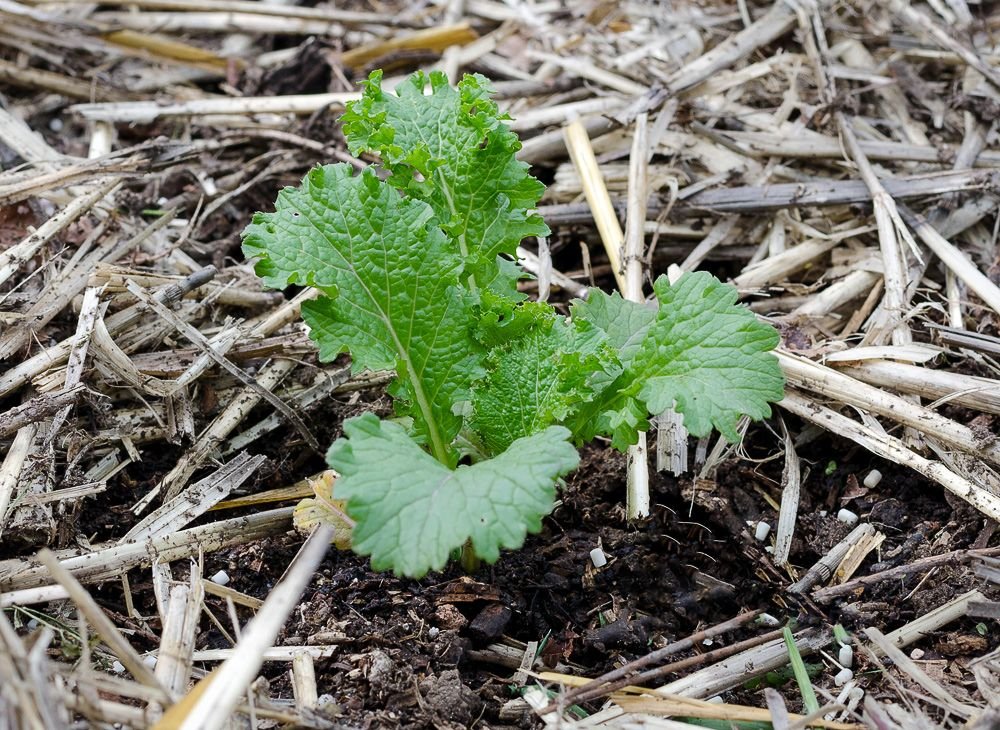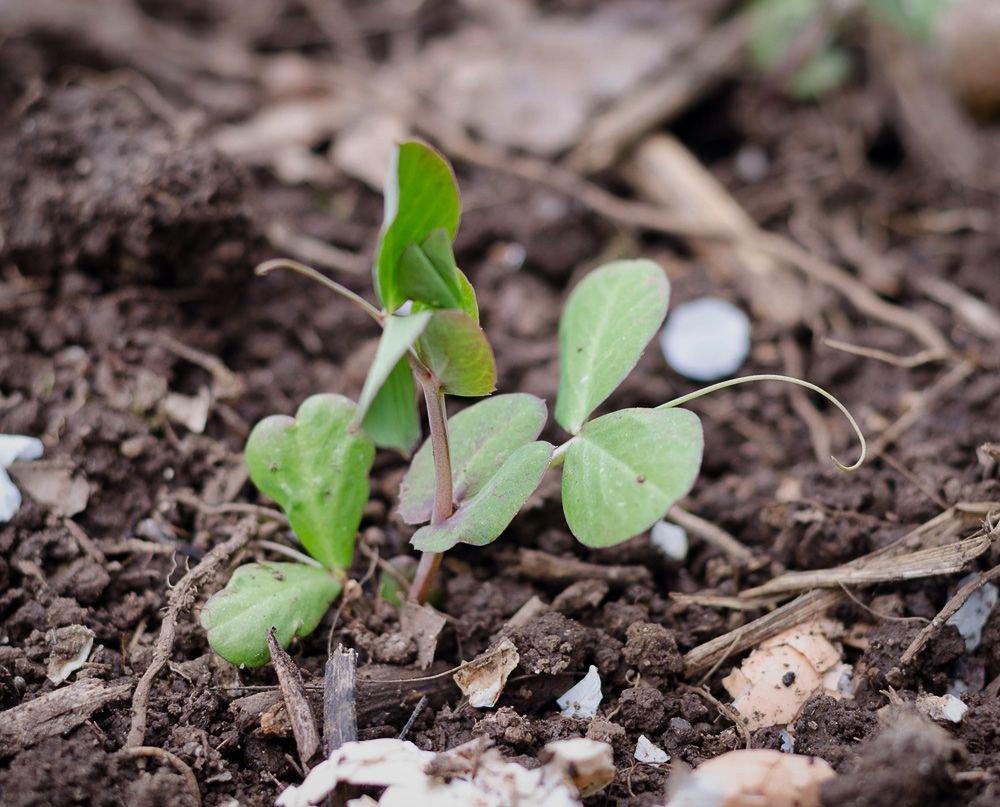
Spring is sprung. Daffodils are in their full glory, blossoms are on the fruit trees, and if you planned ahead, starts are being hardened off, getting ready to be planted out into beds. The growing season is about to get off to a full start so get your garden forks out and your gloves on (if you use them). There’s plenty to do.

Starts planted out in a polyculture. Notice the fine layer of mulch. It helps protects the plants and modulates water, but can be a hiding place for slugs, so slug patrol is needed.
What to Sow Outside
Just about any half-hardy plants can now be sown outside. Root crops will especially love our typical Cascadian April cool weather.
- Carrots
- Leeks
- Green Onions
- Dill
- Fennel
- Lovage
- Parsnip
- Parsley
- Broccoli
- Arugula
- Brussels Sprouts
- Cress
- Kohlrabi
- Radishes
- Turnips
- Beets
- Spinach
- Swiss Chard
- Quinoa
- Burdock
- Lettuce
- Jerusalem Artichokes
- Salsify
- Snap, Snow, and Shelling Peas
- Anise Hyssop
- Potatoes
- Cilantro

This happy little mustard start was sown indoors in late February.
Late April
Most parts of maritime Cascadia are frost free by mid-April, meaning you can plant out crops that are a bit more tender. These plants can take a late surprise of frost, but won’t do well in seriously cold weather.
- Cabbage
- Scarlet Runner Beans (though I’d honestly wait until May to plant these outside)
- Lambsquarters
- Purslane
Flowers
Hardy annuals that can tolerate warm summers can now be sown outside.
- Borage (seriously good for bees, leaves and flowers taste great)
- Calendula (pretty, medicinal, and the flowers are great in salads)
- Nasturtium (pretty, spicy tasting flowers)
Late April
After the last frost is the time to sow summer blooming half-hardy annuals.

A February-sown tatsoi plant happily sharing a bed with the mustard. Remember, while polycultures are advised, they won't stop you from having to rotate your brassicas to avoid Club Foot, so it's helpful to plant them together.
What to Sow Indoors
Late April
They say that squash plants do not transplant well, but I’ve always had good luck with them. (Use plantable containers made of peat, dung, cardboard, paper, or, eggshells.) The recommended option is to sow them under a cloche (except for melons—you have to use a plantable container for them).
- Cucumbers
- Melons
- Pumpkin
- Summer Squash
- Winter Squash
- Basil
What to do in the garden:
Weeding:If you didn’t get a chance to weed your garlic or your perennial beds, now’s the time to do it before the uninvited guests go to seed.
Successional Plantings: Now’s a great time to start successional plantings of spinach, lettuce, spinach, peas and radishes. These are all plants that thrive in cool weather.
Staking: By now you’re February or March-sown peas should be up. Make sure you have something ready for them to climb.
The Soil: If your soil is workable (ours is barely), then this is a good time to till in your cover crops or augment your beds with well-rotted manure and/or compost.
Carrots: We’ve had some dry weather lately and if you’ve planted carrots, you’ll need to remember to keep the soil moist. Carrots are notoriously challenging to germinate, with one of the main mistakes being letting the soil dry out.
Slug Patrol: Slugs and snails are especially active this month. Be on the look out morning and evening.

Magnolia Blossom Snow Pea seedlings that were started in late February. You can't see it here, but there is actually a light mulch of coffee bean hulls and eggshells (the latter to deter slugs).
If you started seeds, much of your time this month is probably going to be spent hardening off plants and transplanting out.
Please keep in mind, this garden guide is for the Cascadian Maritime Climate (West of the Cascades in the Pac NW, US).

Spring has sprung!
If you found this guide helpful, please upvote and resteem. I'm a minnow and dearly love the support!

Community Forums
